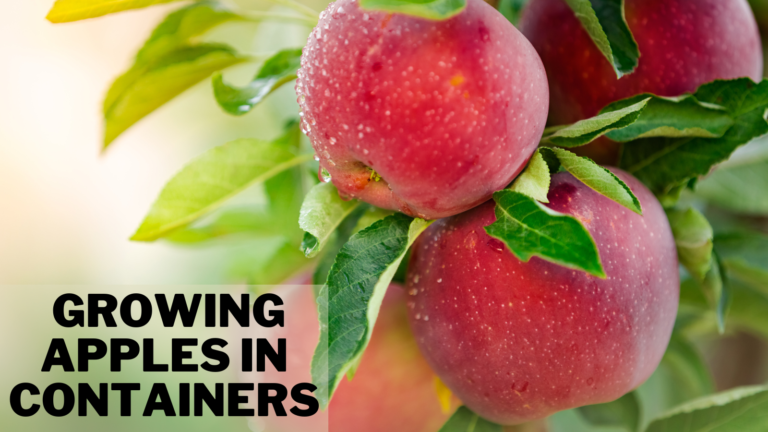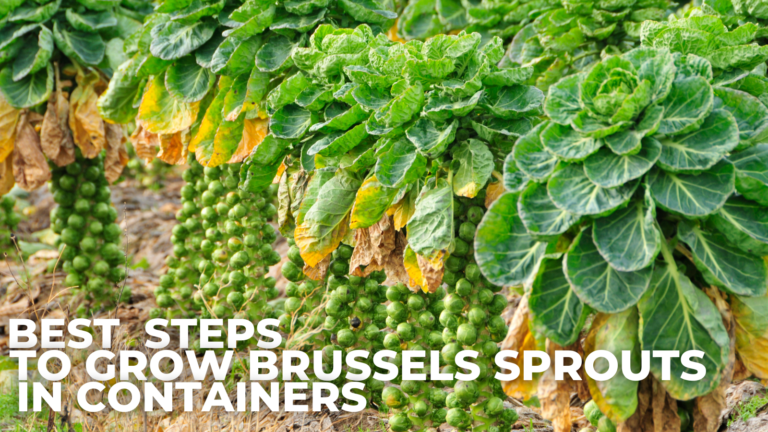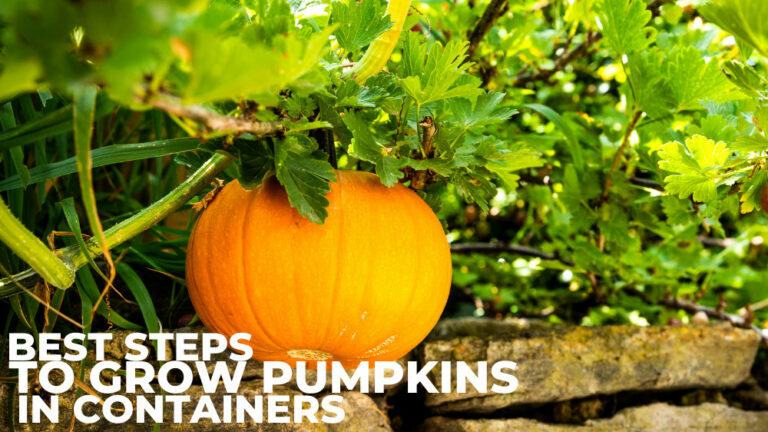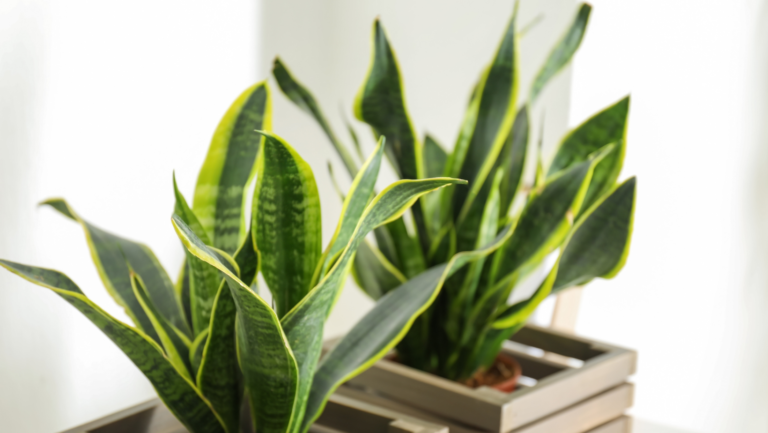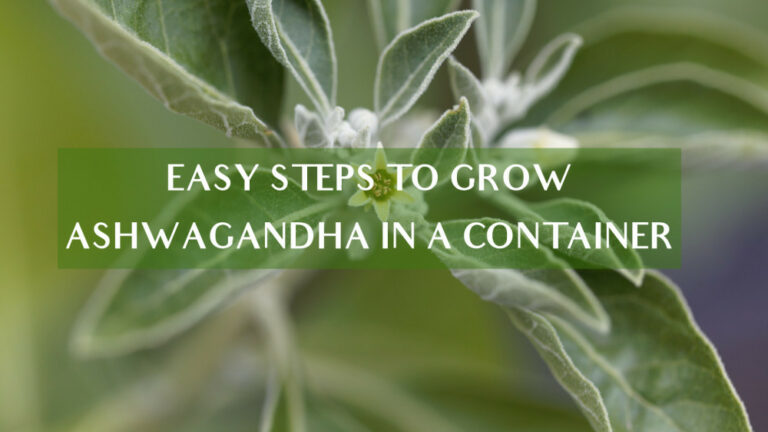Best Container Flowers For A Thriving Garden
Best Container Flowers For A Thriving Garden
Creating a vibrant, thriving garden in containers is a wonderful way to add beauty to any outdoor space, whether a small balcony or a sprawling backyard. Choosing the right flowers is key to success.
This article explores the best container flowers that flourish in pots and provide stunning colour, fragrance, and texture. Whether you're a seasoned gardener or a beginner, these plants will elevate your container gardening experience with ease and beauty.
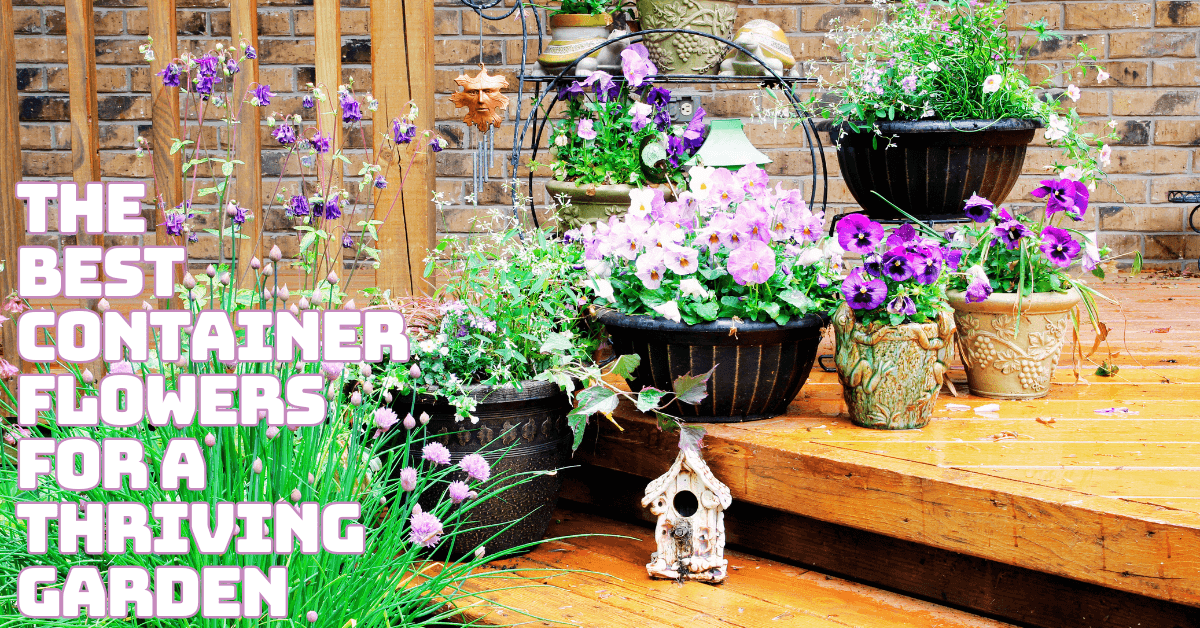
List Of Container Flowers For A Thriving Garden
Here is a list of container flowers for your garden addition:
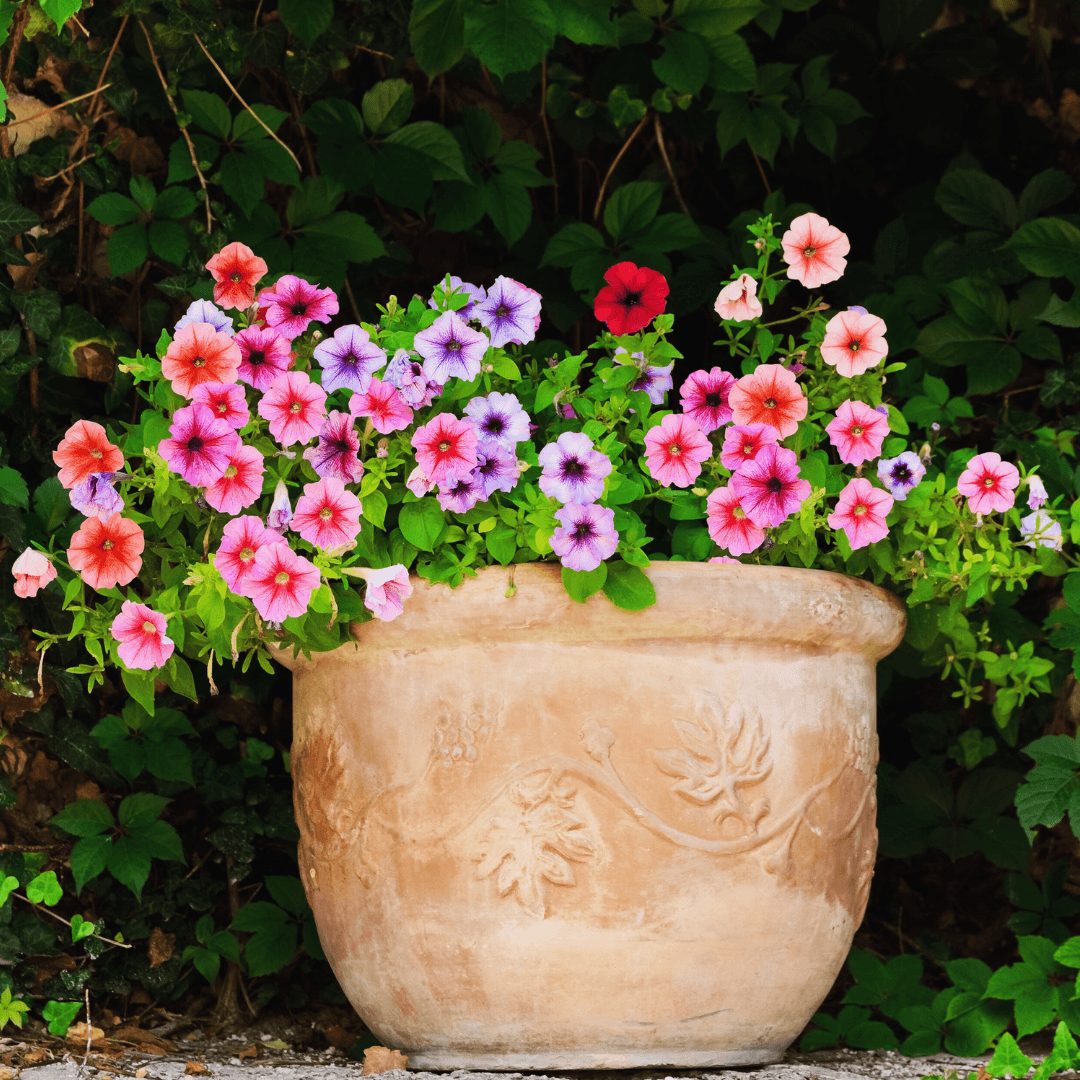
1. Petunias
Petunias from South America are loved for their bright, trumpet-shaped blooms. They thrive in USDA growing zones 9-11 but can be grown annually in cooler areas. Choose a sunny spot to plant petunias and fill a well-draining container with quality potting mix.
Depending on the kind, place them between 6 and 12 inches apart. Water the plant base to prevent wetting the leaves; remove wasted flowers to promote ongoing flowering.
With proper care, petunias reward you with vibrant, colourful blooms that brighten up any garden from spring until the first frost.
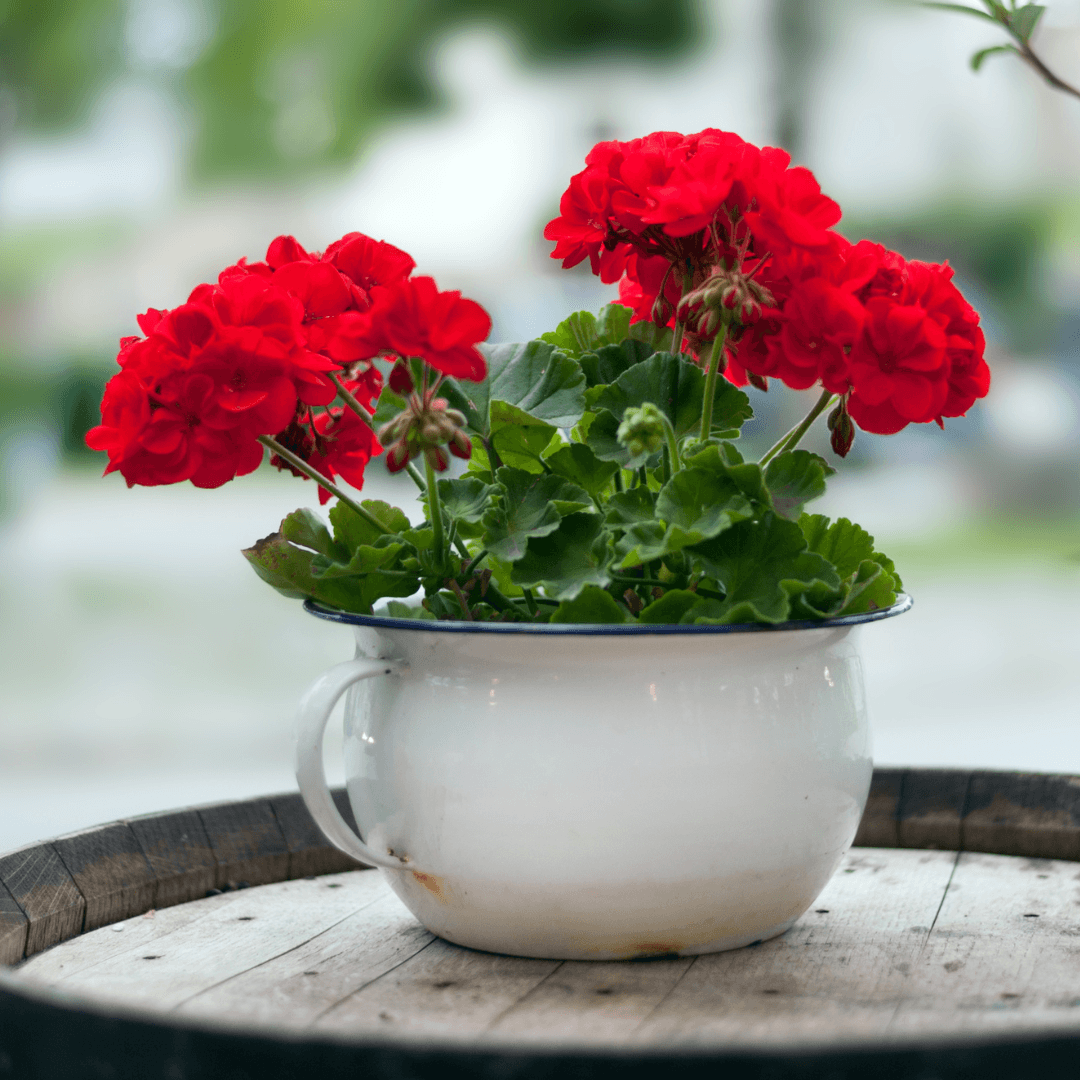
2. Geraniums
Geraniums, native to South Africa, are a staple in container gardening for their robust blooms and easy care. Best suited for USDA zones 9-12, they can be grown annually in cooler climates.
To plant, use a well-draining potting mix in a container with good drainage. Place geraniums in full sun to partial shade and space them 8-12 inches apart.
Give the soil plenty of water, but let it dry out when applied. Regular deadheading and fertilizing every few weeks keep them blooming beautifully. Whether in hanging baskets or pots, their vibrant flowers and lush foliage will brighten your space all season.

3. Fuchsia
Fuchsias, native to Central and South America, are beloved for their striking, pendulous blooms in shades of pink, purple, and white.
Ideal for USDA growing zones 7-10, these beauties prefer cooler climates with partial shade, making them perfect for shaded patios or balconies.
To plant fuchsias, use a rich, well-draining potting mix and ensure regular watering to keep the soil moist but not soggy.
Light fertilization every couple of weeks helps boost their vibrant blooms. Fuchsias thrive in hanging baskets, where their delicate, bell-shaped flowers cascade elegantly, attracting hummingbirds and adding charm to any garden.
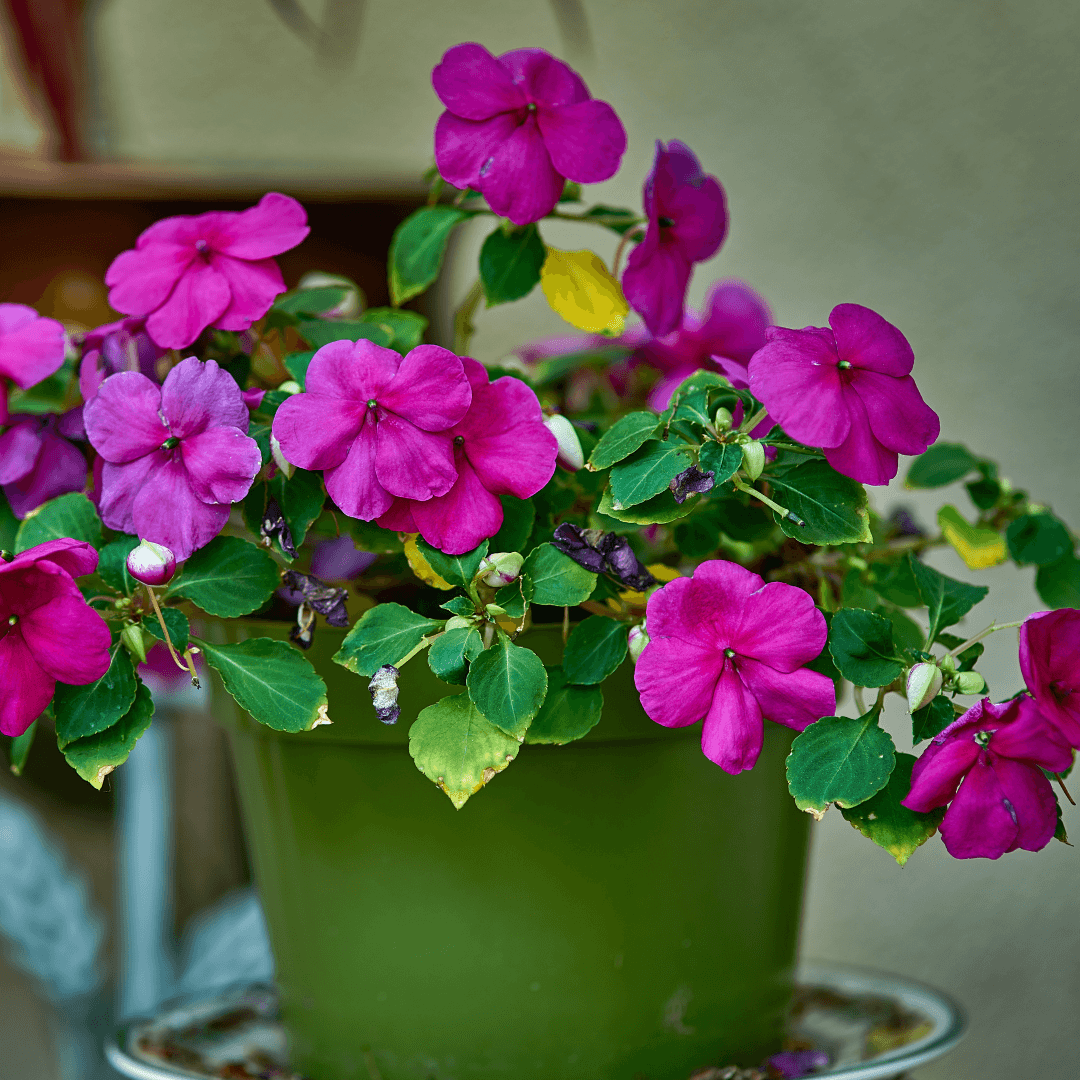
4. Impatiens
Impatiens, originally from East Africa and Asia, are perfect for brightening up the shady corners of your garden. Best suited for USDA zones 10-11, they’re typically grown annually in cooler regions.
Select a shady spot to plant impatiens and use a rich, well-draining potting mix. Space them 8-12 inches apart to allow airflow and reduce disease risk.
Keep the soil moist but not waterlogged, and fertilize every two weeks for lush growth. With proper care, impatiens produce vibrant blooms ranging from red to pink to white, creating a colourful display in low-light areas.
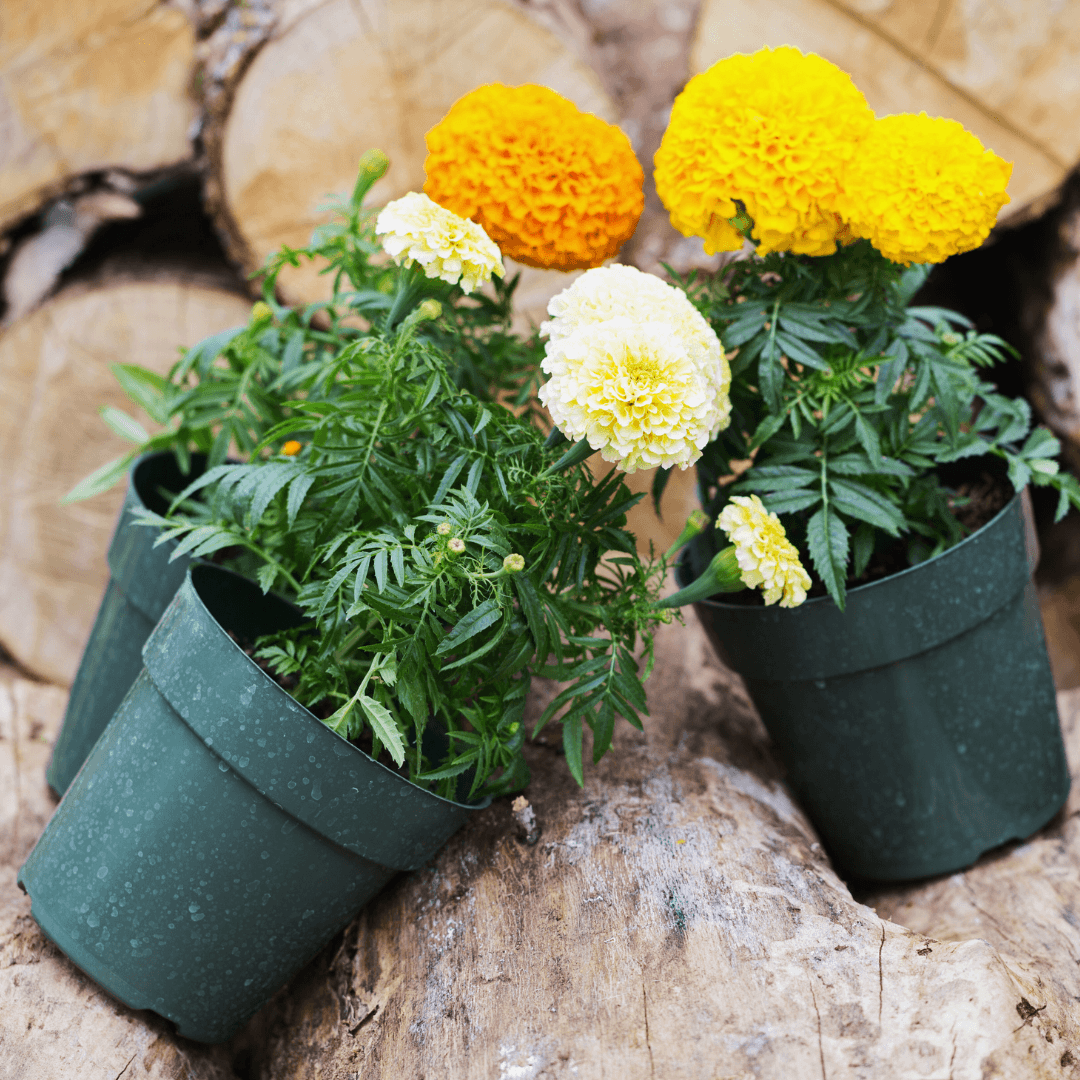
5. Marigolds
Marigolds, native to Mexico and Central America, are prized for their vibrant blooms and natural pest-repelling qualities.
Marigolds are incredibly hardy and thrive in full sun. They are best suited for USDA zones 2-11. Choose a sunny spot to plant marigolds and use well-draining soil in containers. Depending on the kind, place them 6–12 inches apart.
Water regularly, but avoid overwatering. Deadheading spent flowers encourages more blooms throughout the season. Marigolds are among the best container flowers. They add beauty to your garden and serve as excellent vegetable companions, helping keep pests at bay naturally.
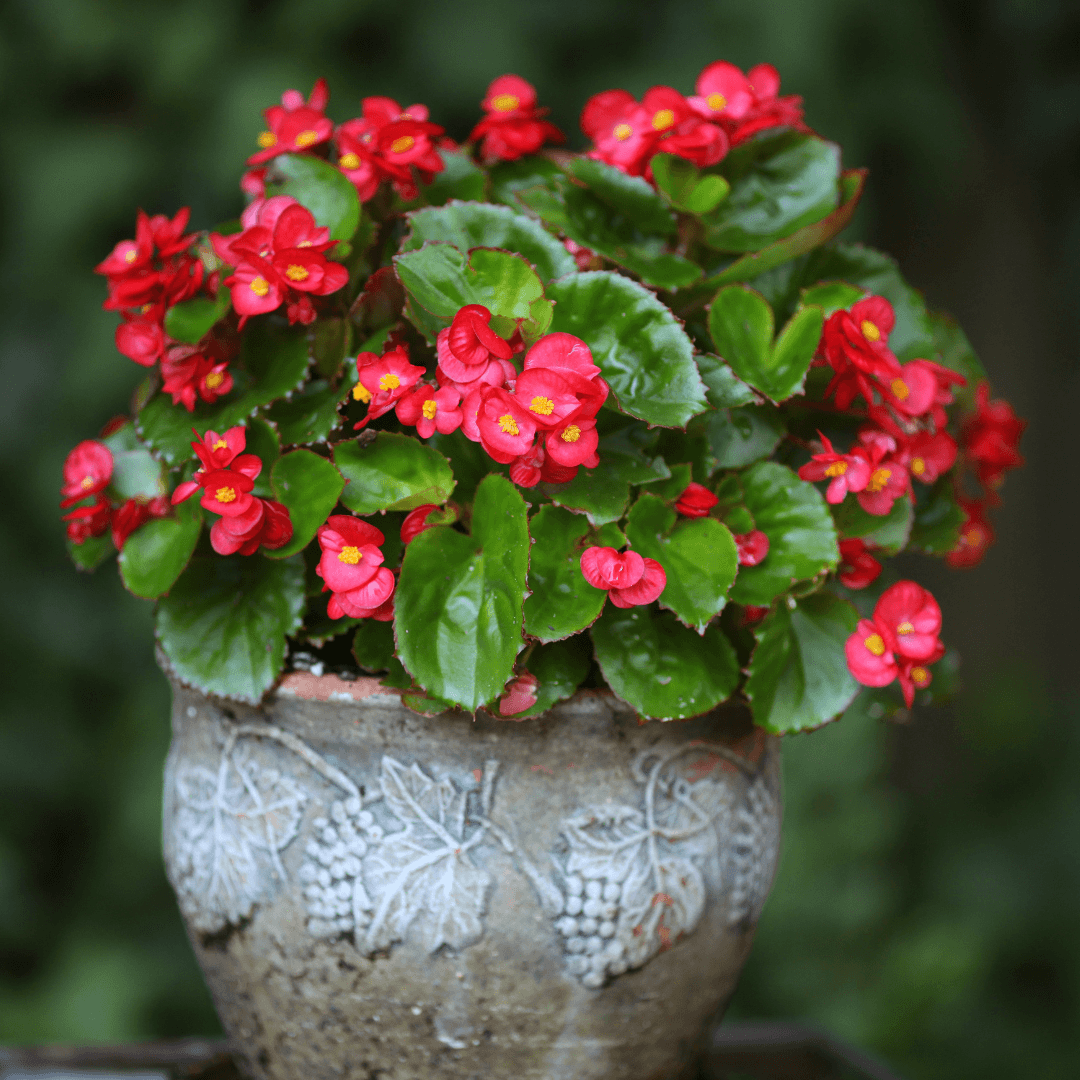
6. Begonias
Begonias, native to tropical and subtropical regions, is versatile for container gardens, especially in USDA growing zones 9-11.
They thrive in partial shade and require rich, well-drained soil to flourish. When planting begonias, choose a container with good drainage, fill it with nutrient-rich potting mix, and place the plants 6-8 inches apart.
Consistent watering is key, as begonias are sensitive to drying out. Their colourful blooms and stunning foliage in green, red, and bronze shades make them stand out in any container. With proper care, begonias will reward you with long-lasting beauty throughout the season.

7. Lobelia
Lobelia, native to South Africa, is a charming trailing plant that adds delicate beauty to container gardens. Best suited for USDA growing zones 10-11, it thrives in cooler temperatures with partial shade, making it ideal for shaded patios or mixed arrangements.
To plant lobelia, use well-drained soil in a container with good drainage and keep the soil consistently moist. Space plants 4-6 inches apart for a fuller look.
Lobelia’s small, vibrant blue, purple, or white flowers cascade beautifully over the edges of containers, making them an excellent choice for pairing with taller plants or as a filler in hanging baskets.
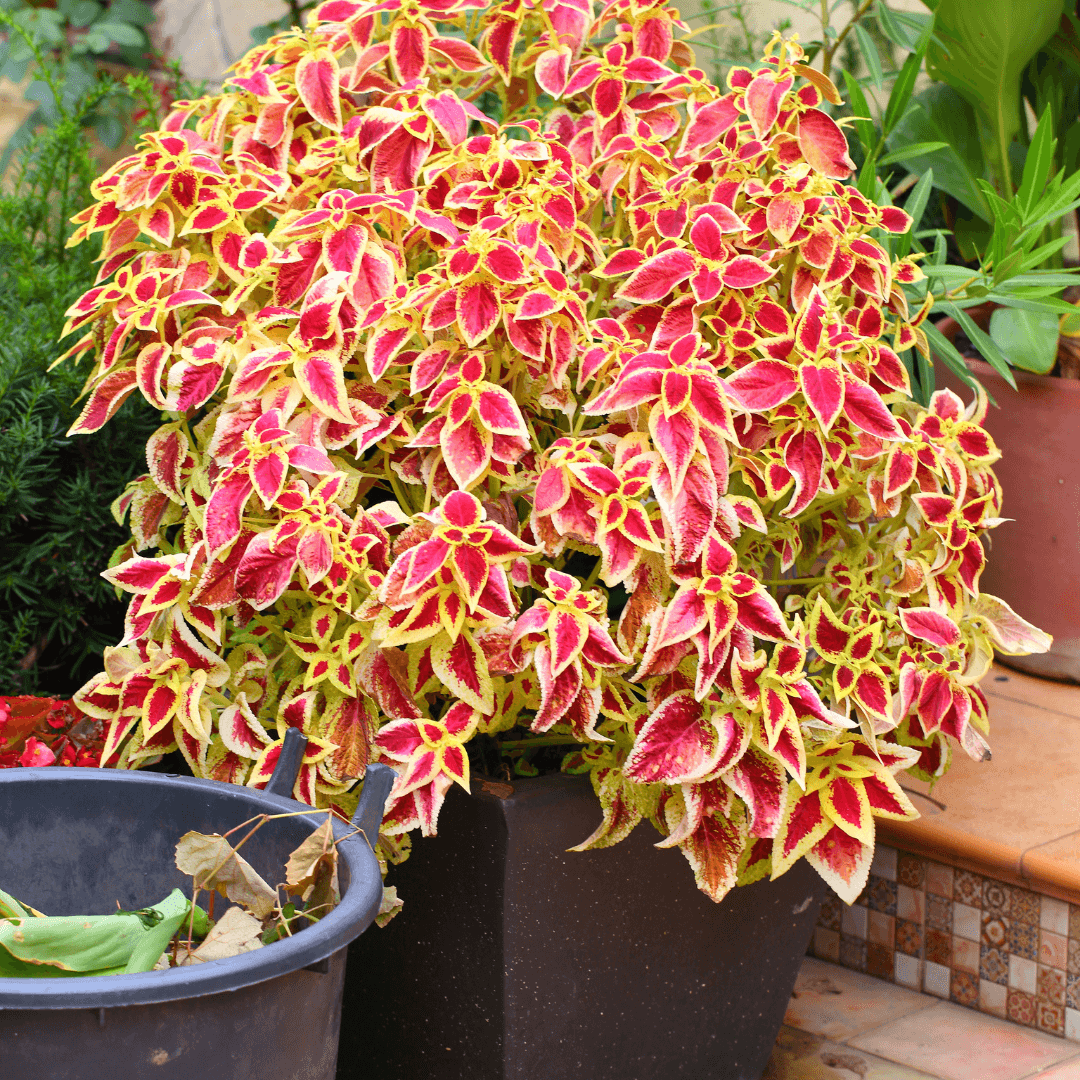
8. Coleus
Coleus, originally from Southeast Asia, is renowned for its vibrant, multicoloured foliage rather than its blooms. Ideal for USDA zones 10-11, coleus thrives in partial shade, though some newer varieties can tolerate more sun. Select a container with adequate drainage and plant using a potting mix that drains properly.
Plant coleus 10 to 12 inches apart. Water often moistens the soil but does not make it soggy. Regular pruning encourages bushier growth and helps maintain their compact, lush appearance.
With their bold patterns and rich colours, coleus is a striking addition to any container garden and offers year-round beauty.
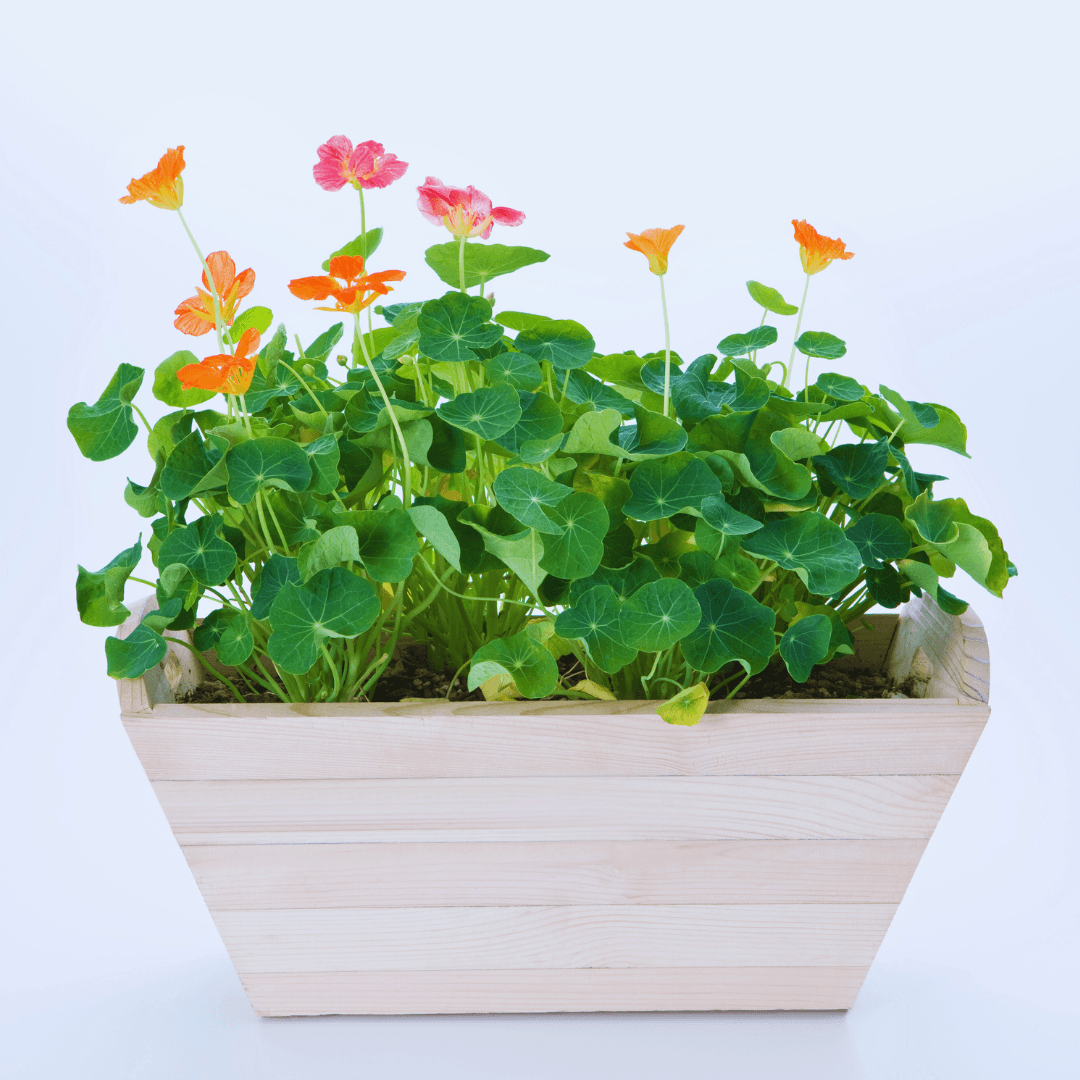
9. Nasturtiums
Nasturtiums, native to South and Central America, are loved for their cheerful, edible blooms and ease of growth. Suitable for USDA growing zones 9-11, they thrive in full sun and prefer poor, well-draining soil, making them low-maintenance. To plant, scatter seeds directly into a container, spacing them about 10-12 inches apart.
Water sparingly, as overly rich soil can lead to fewer flowers. Their vibrant red, orange, and yellow blossoms and round, peppery leaves are perfect for hanging baskets or mixed arrangements. You can collect the leaves and blooms for salads, enhancing your garden's aesthetics and taste.

10. Zinnias
Zinnias are considered some of the best container flowers. They thrive in full sun and add vibrant colour to any summer garden.
Zinnias are best suited for USDA zones 3-10. They prefer well-draining soil and warm temperatures, making them excellent for summer gardens.
To plant, sow seeds or seedlings directly into the soil, spacing them 6-18 inches apart, depending on the variety. Water regularly, but avoid overwatering to prevent mildew.
Zinnias come in a variety of colours and sizes. Their bright, daisy-like blooms attract butterflies and create a lively display in containers or beds.
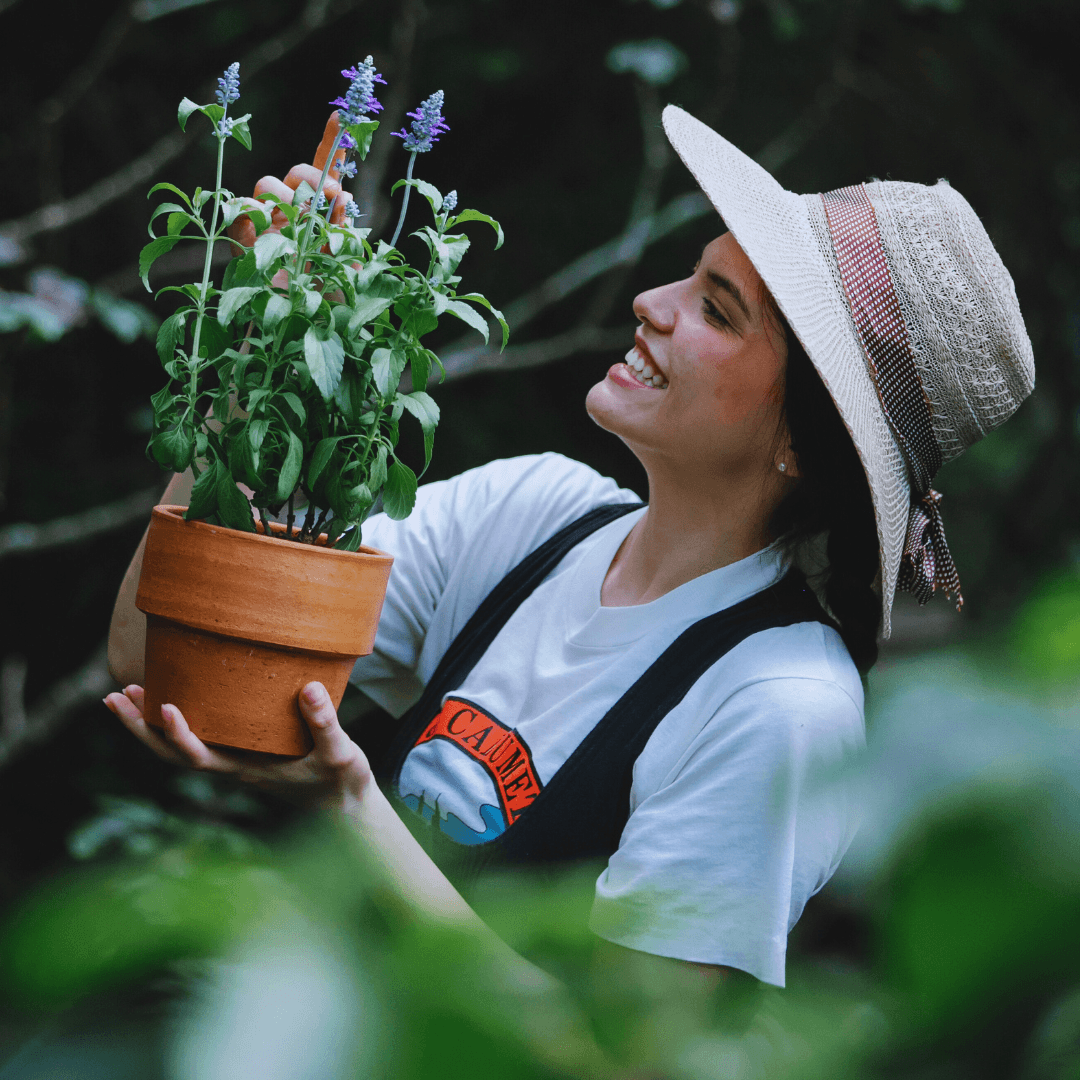
11. Salvia
Salvia, a member of the mint family and native to Central and South America, is loved for its tall spikes of vibrant, tubular flowers.
Ideal for USDA zones 4-10, salvia thrives in full sun and well-drained soil, making it both drought-tolerant and low-maintenance.
Plant your plants 12 to 18 inches apart to promote airflow and guard against disease. Water sparingly, allowing the soil to dry in between applications.
Available in shades of red, purple, blue, and white, salvia's striking flowers attract pollinators like bees and butterflies, creating a stunning display in any container garden throughout the summer and fall.
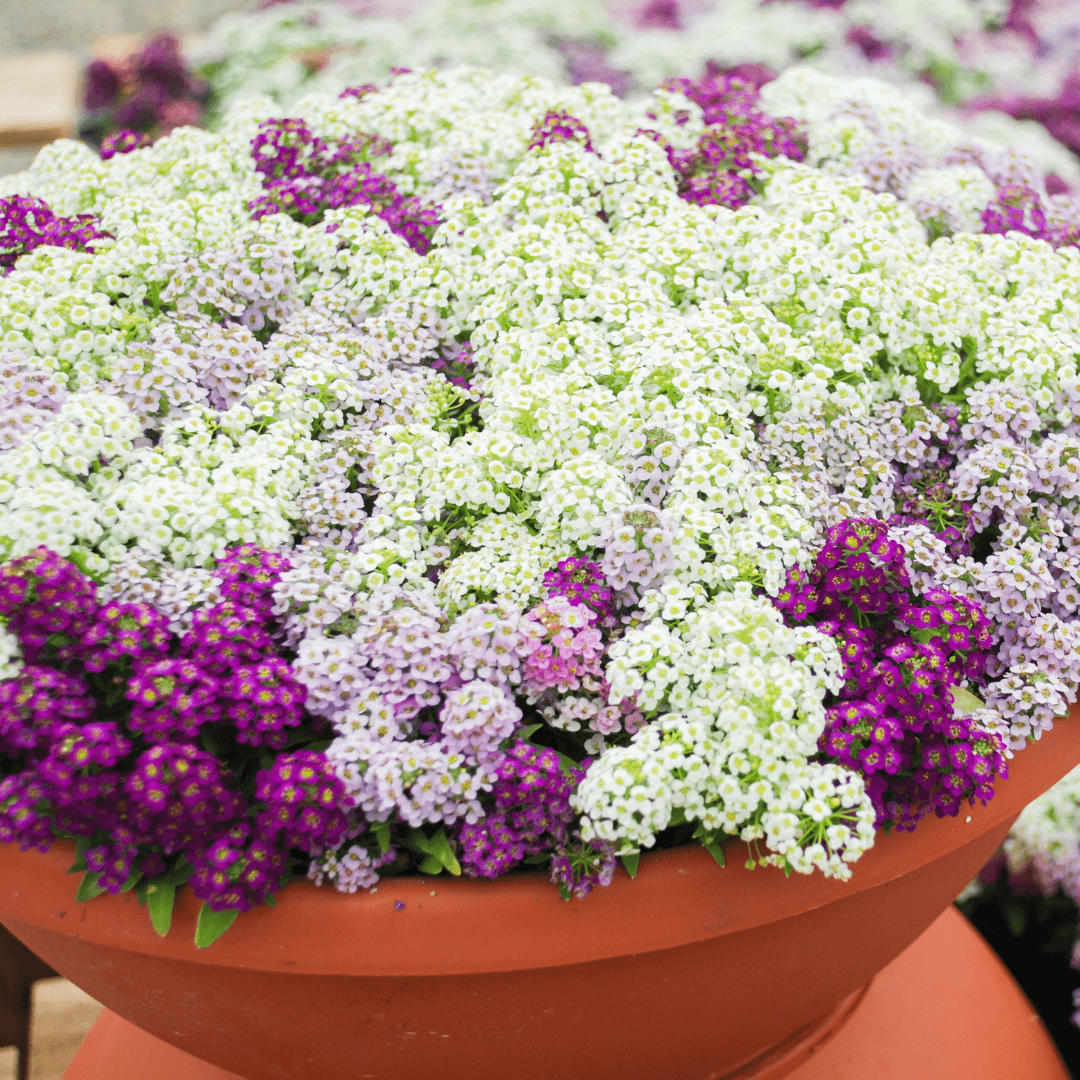
12. Alyssum
Alyssum, native to the Mediterranean region, is cherished for its dainty clusters of fragrant, tiny white, pink, or purple flowers.
Alyssum grows best in USDA zones 5 through 9, preferring well-drained soil and full sun to light shade. To plant, sprinkle seeds or seedlings into containers, spacing them 6-8 inches apart for a dense, lush look.
Water regularly, but avoid waterlogging. With its sweet scent and delicate blooms, alyssum is perfect for adding charm to hanging baskets, window boxes, or mixed arrangements. Its trailing habit also makes it a lovely filler plant, bringing beauty and fragrance to your garden.
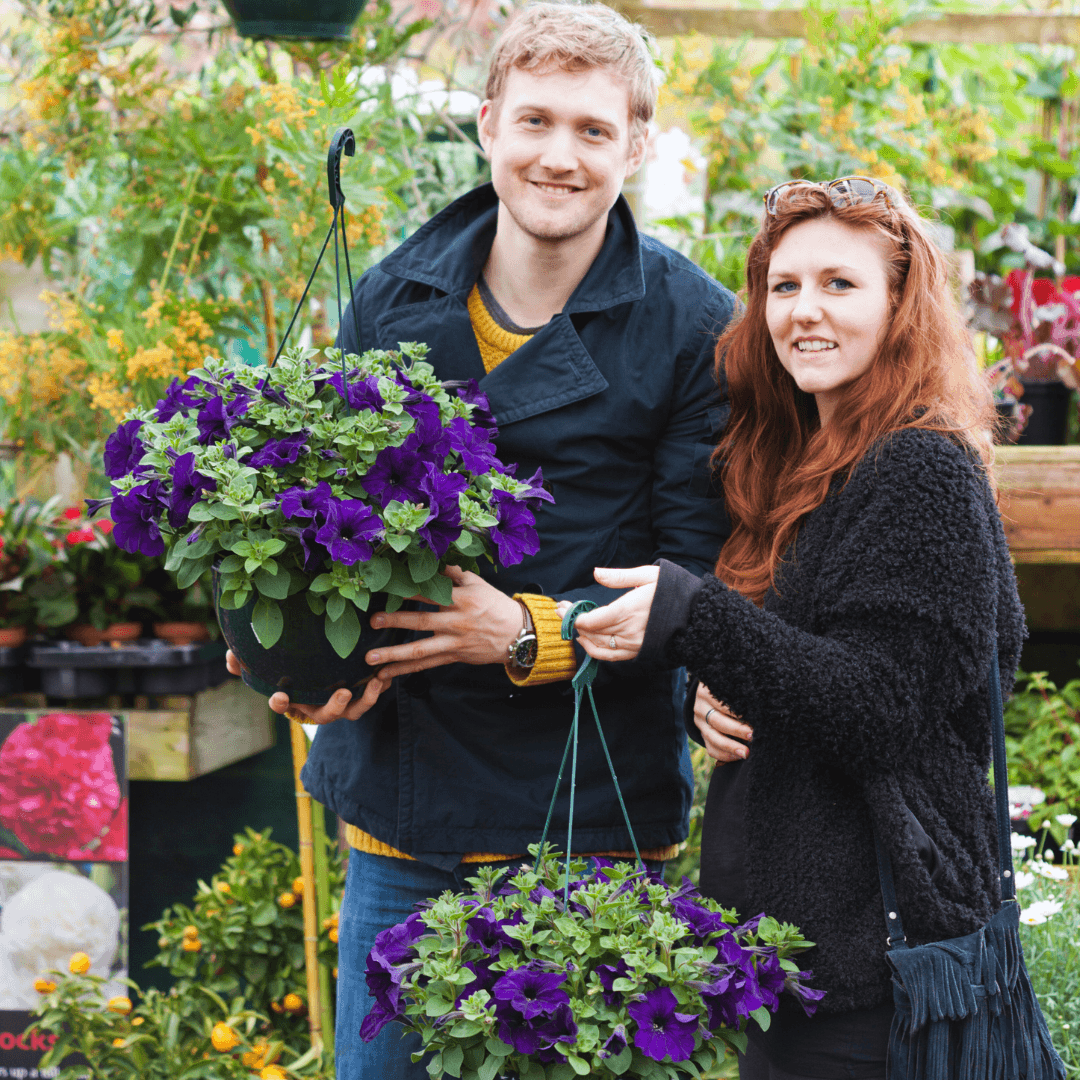
13. Sweet Potato Vine
Sweet potato vine, native to tropical regions of Central and South America, is prized for its vibrant, decorative foliage in shades of green, purple, and bronze. Best suited for USDA growing zones 9-11, it can withstand some shade, but it prefers full sun.
To plant, use a well-draining potting mix in a container, spacing the plants 12-18 inches apart to allow room for spreading.
Water the soil frequently to maintain uniform soil moisture. This trailing sweet potato vine adds texture and contrasts to container gardens. It is ideal for hanging baskets or mixed arrangements where lush foliage can cascade beautifully.

14. Dahlias
Originating in Mexico and Central America, dahlias are renowned for their vivid, striking flowers in various sizes and shapes, from little pom-poms to enormous dinner plate types.
They thrive in USDA zones 8-10 but can grow annually in cooler climates. Plant dahlias in containers in full sun in rich, well-draining soil.
Space the tubers or transplants about 12-18 inches apart. Water regularly so that the soil stays damp but not drenched.
Dahlias are magnificent summertime flowers that bring drama and brilliant colour to any container garden when they are deadheaded regularly.

15. Sunflowers
Sunflowers, native to North America, symbolize summer with cheerful, bright blooms. Miniature varieties, perfect for containers, thrive in USDA zones 4-9.
To plant, choose a larger pot for stability and fill it with well-draining soil. The sunflower needs at least 6 to 8 hours of sunlight daily, so place it in broad sun.
Space the seeds or seedlings about 6-12 inches apart, depending on the variety. Keep the soil moist, but do not overwater. Small sunflowers bloom magnificently when given the right care, giving your container garden a bright, cheery feel.
How To Pick The Best Container For Your Flower Plants
Choosing the right container is just as important as selecting the flowers themselves. The best containers complement your plants visually and provide the space and conditions they need to thrive.
1. Consider The Size Of The Container
Flower Type And Growth
Different flowers have unique root depths and growth habits, affecting your chosen pot size. For example, dahlias need deeper pots (12-18 inches) for their extensive roots, while petunias can thrive in shallower containers (6-8 inches) that accommodate their smaller root systems.
Growth Stage
Your plants' growth stage also influences container size. Start seedlings in smaller pots (4-6 inches) and transplant to larger ones (8-12 inches) as they grow.
This method guarantees that your flowers have enough room for their roots to grow, resulting in stronger plants and more colourful blooms.
2. Material Matters
Plastic Containers
Due to their moisture retention, plastic pots are ideal for beginners. They are also among the best container flowers for moisture-loving flowers like impatiens.
Clay or Terracotta Pots
These porous materials promote airflow and excellent drainage, reducing the risk of root rot. However, they dry out faster, requiring more frequent watering. Terracotta pots are perfect for drought-tolerant plants like succulents or lavender, which prefer drier conditions.
Ceramic Pots
Known for their aesthetic variety, they come in many colours and styles. However, they must have drainage holes to prevent waterlogging, as they tend to hold moisture longer.
For example, ceramic pots work well for flowers like begonias, which enjoy consistent moisture without becoming waterlogged.
Wooden Containers
Wooden pots add a charming, rustic touch to any garden, but untreated wood can decay over time. Lining them helps prevent soil leakage and extends their life.
For instance, wooden containers are ideal for larger plants like hydrangeas, which benefit from the insulation wood provides.
3. Drainage Is Key
Drainage Holes
Containers with drainage holes are essential to avoid water buildup, which can cause root rot. If your chosen pot lacks holes, drill some or use it as a decorative outer pot with a proper inner container. For instance, herbs like rosemary thrive in pots with good drainage.
Drainage Layers
Add a layer of pebbles or broken crockery to the bottom of the pot to help with drainage. This prevents water from pooling around the roots. Succulents benefit from this extra drainage to keep their soil dry and prevent overwatering.
4. Check For Weight And Stability
Stability
Heavier containers provide better stability, making them less prone to tipping over in windy conditions. For instance, heavier materials like ceramic can prevent accidents when placing flowers on a balcony. However, lighter options can be suitable if the plants are on a table.
Mobility
If you enjoy rearranging your plants, choose lightweight materials like plastic or pots with wheels for easy mobility. For example, a rolling cart with potted flowers allows you to shift your garden's layout effortlessly or bring plants indoors during harsh weather, ensuring flexibility and convenience.
5. Aesthetic Appeal
Colour And Style
Selecting containers that match your home and garden design enhances overall aesthetics. Brightly coloured pots can make vibrant flowers pop, while neutral tones create a timeless appeal.
For example, a bold red pot can beautifully showcase sunny marigolds, while a classic terracotta pot complements traditional garden themes.
Shape
The shape of your container plays a crucial role in plant growth. Tall, narrow pots are ideal for trailing plants like lobelia, allowing them to cascade elegantly, while wide pots suit spreading varieties like petunias, giving them ample space to thrive. This thoughtful consideration maximizes both beauty and plant health.
6. Insulation Properties
Climate Considerations
Opt for materials that protect roots from extreme heat in hot climates. Light-colored pots reflect sunlight and reduce heat absorption, preventing plant stress.
For instance, a light ceramic pot can help keep delicate plants like petunias cooler, while dark pots may overheat, damaging the roots.
Frost Resistance
Choose insulating pots or frost-resistant materials in colder climates to protect roots from freezing temperatures. For example, thick-walled ceramic or insulated plastic pots can safeguard sensitive plants like dahlias during winter. Additionally, wrapping pots in burlap or using pot covers can provide extra protection against harsh winter conditions.
How To Select The Best Flowers For Container Gardening
Selecting the best flowers for container gardening can enhance your outdoor space and bring vibrant colours to patios, balconies, or entryways. Here’s a guide to help you choose the right flowers for your containers:
1. Consider The Climate
Hardiness Zone
Understanding your USDA hardiness zone is crucial for selecting the best container flowers to thrive in your climate and provide stunning blooms throughout the growing season.
Research local resources to identify your zone and choose hardy varieties that flourish and deliver stunning blooms throughout the growing season.
Sun Exposure
Assess the sunlight your container will receive, whether full sun, partial shade, or full shade. This knowledge will guide your flower selection, ensuring you choose plants that thrive in their designated light conditions for optimal growth and beauty.

2. Choose The Right Container
Size and Drainage
Choose containers with sufficient drainage holes to prevent waterlogging. Larger pots retain moisture better and offer ample space for root growth, ensuring your flowers thrive and develop robust root systems for a healthier, more vibrant display.
Material
Consider terracotta, ceramic, or plastic materials based on your aesthetic preferences and insulation properties. Terracotta offers excellent breathability, while ceramic adds a decorative touch. Plastic pots are lightweight and affordable, making them versatile for various gardening styles.
3. Select Flower Types To Grow In A Container
Annuals
These flowers' life cycles are finished in a single growing season. Popular choices include petunias, marigolds, and geraniums.
Perennials
These flowers come back year after year. Options include daylilies, coneflowers, and lavender.
Biennials
These take two years to complete their life cycle. Examples are foxgloves and hollyhocks.

4. Colour And Texture
Colour Harmony
Select flowers that harmonize in colour to create a visually appealing arrangement. Utilize a colour wheel to guide your choices; for instance, pairing complementary colours like purple and yellow or analogous colours like red and orange can enhance the beauty of your container garden.
Variety Of Textures
Incorporate flowers with varying leaf shapes and textures to add depth and interest to your arrangement. Mixing smooth, broad leaves with feathery or ruffled foliage can create a dynamic display, making your container garden more captivating and visually engaging throughout the growing season.
5. Height And Foliage
Layering
Arrange taller plants at the back or center of the container, medium-height plants in the middle, and trailing plants at the front or edges.
This technique showcases the best container flowers by arranging taller plants at the back, medium-height plants in the middle, and trailing plants at the front for a visually appealing display.
Foliage Consideration
Include foliage plants like ferns or coleus to add texture and colour to your arrangement, even when flowers aren’t in bloom. This strategy provides year-round interest, ensuring your container garden remains
Conclusion
In conclusion, selecting the best container flowers involves considering climate, size, drainage, and aesthetics. A beautiful and flourishing container garden can be made by selecting various complementary blooms and using efficient planting methods.
Remember to prioritize local varieties and embrace companion planting for added benefits. With careful planning and creativity, your container flowers can flourish throughout the seasons, bringing vibrant colour and joy to your outdoor space. Happy gardening!
I trust you enjoyed this article on Best Container Flowers For A Thriving Garden. Stay tuned for more blog posts soon. Take care!
JeannetteZ
>>>Please click here to read my all-inclusive article, About The Essential Companion Planting Guide<<<
>>>Please click here to read my all-inclusive article about Container Gardening<<<
>>>Are you interested in homegrown herbs and medicine? Please click here to find out more about it!<<<
Your Opinion Is Important To Me
Do you have thoughts, ideas, or questions? I would love to hear from you. Please leave me your questions, experiences, and remarks about this article, Best Container Flowers For A Thriving Garden, in the comments section below. You can also email me at Jeannette@Close-To-Nature.org.
Disclosure
This post may contain affiliate links. As an Amazon Associate and other affiliate programs, I earn from qualifying purchases at no extra cost to you. Please read my full affiliate disclosure.
You might also enjoy these blog posts:
Best Container-Grown Vegetables
How To Grow Wildflowers In Pots
The Power Of Sound Frequency Healing
How To Grow Prickly Pear Cactus
Complete Plant Propagation Techniques



